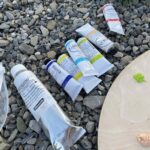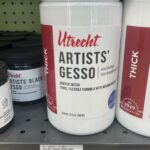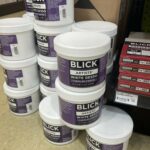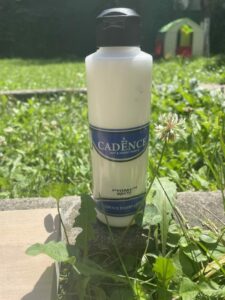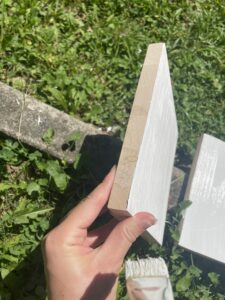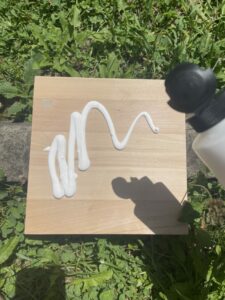A complete guide
What’s the difference between acrylic vs. oil paint?
TLDR: Acrylic paint is easier to use and clean; oil paint has richer hues and takes longer to dry, giving you more time to work into a painting.
Here’s a breakdown of acrylic vs. oil paint.
Both acrylic and oil paints have their unique qualities. The one you prefer will depend on your working style and desired effects. You can even combine the two mediums in your artwork to take advantage of the strengths of each. You have to be mindful of how to do this, though. It isn’t straightforward, as I will explain below.
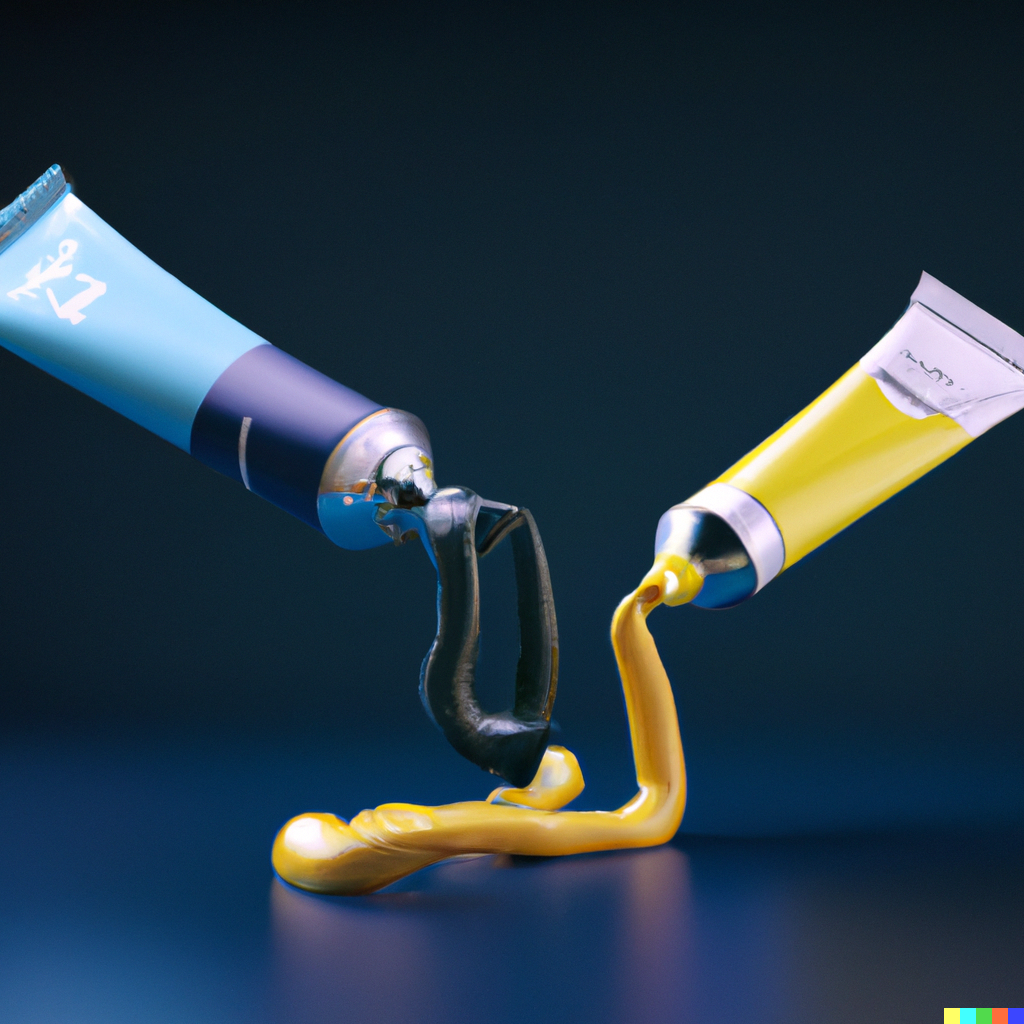
But, acrylic and oil paints differ in composition, drying time, and handling characteristics. Below, I describe the main differences between acrylic and oil paints in detail.
Acrylic vs. Oil Composition
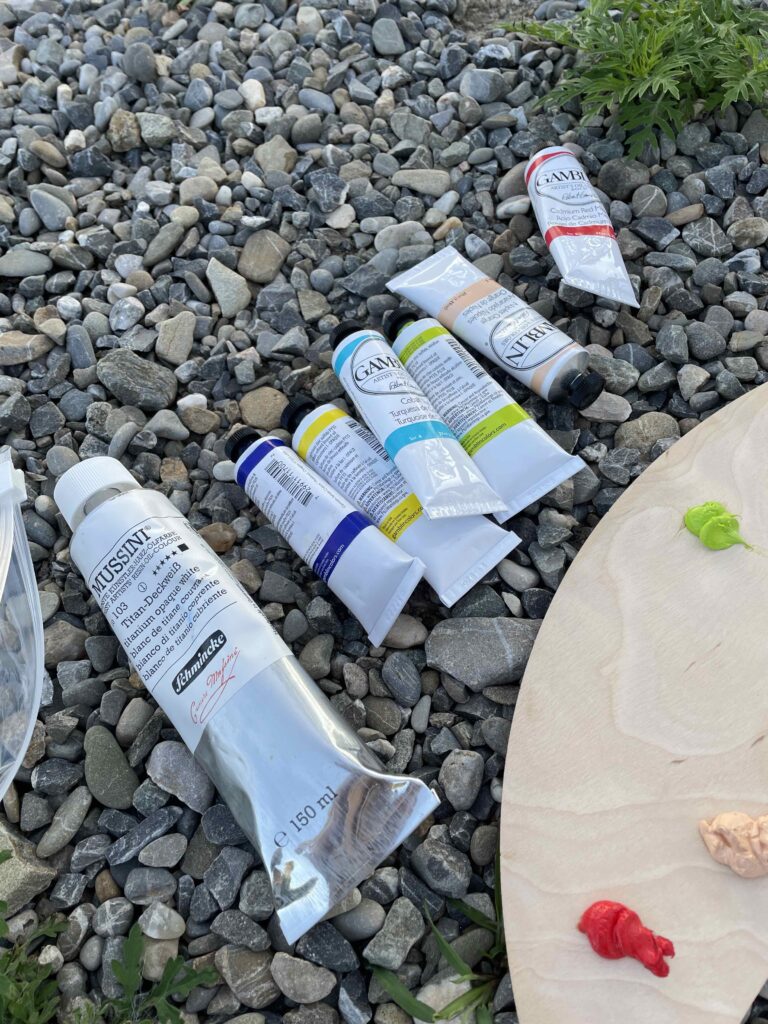
- Acrylic paints are water-based, consisting of pigment particles suspended in an acrylic polymer emulsion.
- On the other hand, oil paints are made by mixing pigment particles with a binder, traditionally linseed oil. However, other oils like walnut, safflower, or poppy seed oil can also be used.
Drying Time
One of the significant distinctions between acrylic and oil paints is their drying time.
- Acrylic paints dry relatively quickly, typically within minutes to hours, depending on thickness and humidity.
- Oil paints, however, have a significantly longer drying time, often taking days, weeks, or even months to fully dry and cure. This extended drying time allows for more extended periods of blending and reworking.
Application and Handling
- Acrylic paints are known for their versatility and ease of use. They can be applied to various surfaces, including canvas, paper, wood, etc. Acrylics dry to a flexible, water-resistant, and permanent finish. They can be diluted with water or mediums to create transparent washes or layered for opaque effects. Acrylics also have a more matte appearance when dry.
- Oil paints offer a buttery consistency and smooth blending capabilities. They have a longer “open” or working time, allowing artists to manipulate the paint on the canvas for extended periods. This makes them well-suited for techniques like glazing and impasto. Oils have a rich color saturation and, when dry, provide a glossy finish. They can be thinned and cleaned with solvents like mineral spirits or turpentine.
Color Shift and Aging
- Acrylic paints generally dry to a finish that closely resembles the color seen when wet.
- Oil paints, on the other hand, tend to undergo a slight color shift as they dry. This means that the final dried color of an oil painting may be slightly different from the wet color initially applied. Additionally, oils may have a more extended lifespan and resist yellowing over time better than acrylics, which can be prone to slight color changes and fading.
Health and Safety:
- Acrylic paints are generally considered safer to use than oil paints. Acrylics are water-based and emit fewer fumes or volatile organic compounds (VOCs). They can be cleaned with water and soap, making them more environmentally friendly.
- Oil paints- being oil-based, require the use of solvents for cleaning, thinning, and varnishing. These solvents can release harmful fumes and should be used with proper ventilation and caution.
Who are some artists who have worked in acrylic and oil paint?
Many artists have worked with both acrylic and oil paints throughout their careers. Here are a few notable examples:
- David Hockney: Hockney is a renowned British artist who has worked extensively in both acrylic and oil paints. His vibrant and colorful paintings often depict landscapes, portraits, and still life subjects.
- Gerhard Richter: Richter is a German artist known for his diverse range of styles and techniques. He has worked in both acrylic and oil paints, creating abstract and photorealistic paintings. His blurred and textured works have garnered international acclaim.
- Elizabeth Peyton: Peyton is an American artist recognized for her intimate portraits of celebrities and friends. She has employed acrylic and oil paints to create her distinctive, stylized paintings that often explore youth, beauty, and fame themes.
- Chuck Close: Close is an American painter known for his large-scale, hyperrealistic portraits. He has experimented with various media, including acrylic and oil paints, creating intricate and detailed compositions.
- Alex Katz: Katz is an American figurative painter renowned for his bold and simplified representations of landscapes, portraits, and everyday scenes. He has worked in both acrylic and oil paints, developing a unique style characterized by flatness and vibrant colors.
- Jennifer Bartlett: Bartlett is an American artist recognized for her multi-panel paintings and installations. She has utilized both acrylic and oil paints in her work, exploring geometric abstractions and the relationship between space and surface.
These artists demonstrate the versatility of working with both acrylic and oil paints, showcasing the different effects and techniques that can be achieved with each medium.
Can I paint with acrylic and oil together?
Mixing acrylic and oil paints on the same painting surface is generally not recommended, but it doesn’t have to be acrylic vs. oil paint. It is possible to combine them within a single artwork with some precautions. There are lots of famous artists who mixed media, with Jasper Johns being a prime example.
Here are a few approaches to consider:
Layering
You can start by creating a base layer with acrylic paint, allowing it to dry completely. Once the acrylic layer is dry, apply oil paint on top. This method ensures that the two types of paint do not mix directly. Remember that oil paint dries much more slowly than acrylic, so you will need to wait for the oil layer to dry fully before making any significant changes or applying subsequent layers.
Mixed Media
Another option is incorporating acrylic and oil paints in a mixed-media approach. You can create separate sections or elements using acrylic paint and others using oil paint. For instance, you might paint the background with acrylics and add details or textured effects with oil paint on top. This allows you to take advantage of the unique properties of each medium and play with the dynamic between acrylic vs. oil paint.
Glazing and Varnishing
Technically, acrylic paints can be used as a varnish or glazing layer over an oil painting. I don’t recommend doing this because I think there are better ways to glaze with mediums made for oil paint, but you *can*.
Once the oil paint has dried completely (which can take weeks or months), apply a layer of acrylic varnish or glaze to protect the oil painting. This can help enhance colors, add gloss, or provide a protective layer.
Be careful, though. There are some considerations when combining acrylic and oil paints. Acrylic paints dry quickly, while oil paints have a slower drying time. This difference in drying time can affect the overall stability and longevity of the artwork. Also, the flexibility of acrylic paint may differ from the more flexible nature of oil paint, which could cause cracking or other issues over time.
So, when combining acrylic and oil paints, ensure each layer is fully dry before applying the other medium. Additionally, it’s essential to consider your artwork’s long-term preservation and archival quality when using different mediums together. Usually, mixing media makes it harder to keep a work archival.
